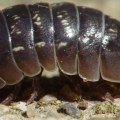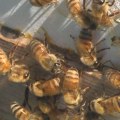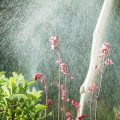Lawn insect control is an essential aspect of maintaining a healthy and aesthetically pleasing outdoor space. It involves the strategic management and elimination of various insects that can damage grass, plants, and trees, ultimately affecting the overall health and beauty of lawns and gardens. Insects such as grubs, chinch bugs, armyworms, and sod webworms can cause significant damage to the turf, leading to brown patches, thinning grass, and in severe cases, the death of large areas of lawn. Effective lawn insect control strategies encompass a range of practices, from preventive measures to targeted treatments, aimed at minimizing the impact of these pests on the lawn ecosystem.
Preventive measures are a fundamental component of lawn insect control, focusing on creating conditions less favorable for pest infestation. This can include proper lawn care practices such as regular mowing, watering, and fertilizing, which promote the growth of strong and resilient grass. Additionally, maintaining a healthy soil environment through aeration and the addition of organic matter can enhance the lawn's natural defenses against pests. For specific insect threats, the application of insecticides may be necessary. These treatments can be applied as granules, liquids, or baits, depending on the type of insect and the extent of the infestation. It's crucial that any chemical treatments are selected and applied carefully, following label instructions to avoid harm to non-target organisms and the environment.
Integrated Pest Management (IPM) is another critical approach within lawn insect control. IPM involves monitoring the lawn for insect activity and identifying pests accurately to determine the most effective and environmentally sensitive approach to management. This may include biological controls, such as introducing natural predators or beneficial nematodes, which can reduce pest populations without the need for chemical treatments. Cultural controls, such as adjusting irrigation practices or removing thatch, can also deter pests by altering the environment to make it less appealing to them.
One specific challenge many homeowners face is removing fire ants, a pest notorious for its painful stings and the damage it causes to lawns and outdoor areas. Removing fire ants requires a targeted approach, often involving the use of bait products that the ants carry back to the colony, effectively eliminating the queen and disrupting the colony's ability to reproduce. This task exemplifies the need for specialized strategies within lawn insect control to address particular pests that pose a significant threat to lawn health and human safety.
In summary, lawn insect control is a multifaceted discipline that plays a vital role in the upkeep of healthy and vibrant lawns. By combining preventive measures, the judicious use of chemical treatments, and the principles of Integrated Pest Management, homeowners can protect their lawns from the damaging effects of insect pests. The challenge of removing fire ants highlights the importance of targeted interventions in managing specific pests. Through a comprehensive and informed approach to lawn insect control, it's possible to maintain a lush, green lawn that is both beautiful to behold and enjoyable to use, free from the detrimental impacts of invasive insect pests.







